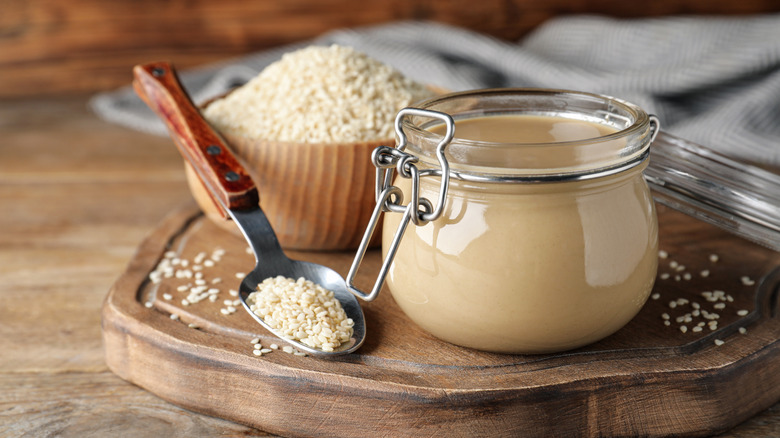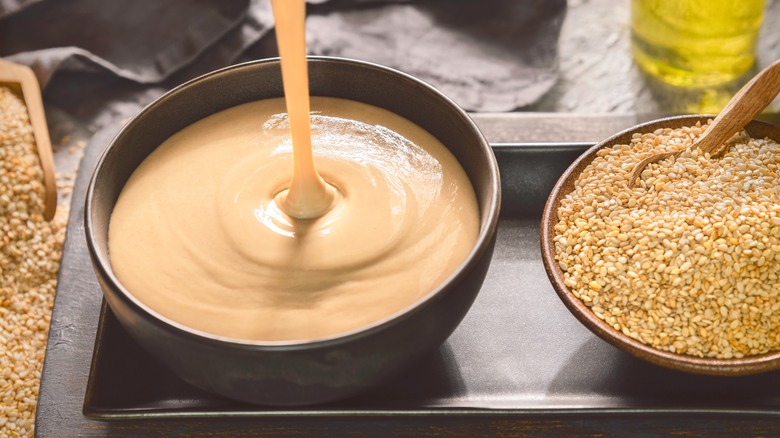Tahini Doesn't Always Need To Be Refrigerated
Few spreads can compare to the strong, nutty taste of tahini. Whether you're slathering it on smoky, charred eggplants or incorporating it into a classic baba ganoush, this sesame-based paste pairs excellently in both sweet and savory dishes, making it a favorite among many home cooks. But with so many essential ingredients already taking up crucial space in your refrigerator, it can be quite difficult to fit a jar of tahini into your cooking (both literally and figuratively). However, you don't have to relegate tahini to the cold temperatures of the fridge — this spread is actually stable at room temperatures.
Much like peanut butter, tahini stored on the shelf tends to have a softer, more malleable texture that makes it easier to pour over food. While refrigeration does make the oil content of tahini less prone to separation, any splitting can be mitigated by mixing and preventing by using this spread regularly in the kitchen. In fact, tahini stored at room temperature tends to expire after a few months, giving you plenty of time to integrate a jar of tahini into many snacks and main dishes.
Avoid oxidation by keeping your tahini in the pantry
While less susceptible to oxidation when compared to other sesame-based condiments (think sesame oil), oxidation can turn any luscious batch of tahini into an unappetizing mess if given enough time to develop. Unsaturated fats, which compose most of the oil in sesame seeds, turn rancid rapidly due to this chemical process, giving your tahini an astringent, bitter flavor that does not bode well for any recipe. This makes tahini a little more finicky to store, but there are a few things you can do to minimize this issue without resorting to your fridge.
Heat accelerates oxidation, so you want to minimize any unnecessary exposure to high temperatures that could ruin your tahini. You can easily accomplish this by storing it in the cool pantry, away from the residual warmth of sunlight and heat sources like the stovetop. The shelves in your kitchen will also help keep your tahini dry, which will also lessen the chances of mold from growing on it.
Watch for any changes that could indicate spoilage
While certainly sturdy, tahini does not last forever even in the fridge. Off-putting smells, drastic changes from its light beige color, and sourness are common indicators that rot has taken over your spread. Pure, quality tahini does have a subtle, bitter undertone, but anything stronger than that likely indicates that your spread should probably be tossed out.
Harmful pathogens are not always present to the naked eye, so always check and ensure to use your tahini within the expiration date to minimize the chances of foodborne illness. When comparing products at the grocery store, try to find newer batches whose label indicates a lifespan of a year or two, as younger tahini will have had less time to oxidize and spoil than an old jar. Restraint in size will also go a long way here, so opt for smaller quantities unless you're more than confident that you'll use a lot of tahini in the future.
During shopping, you should also remember that tahini and tahini sauce are not the same. The latter tends to contain water and doesn't last more than a few days in the fridge, so be extremely cautious with it and don't leave it out in the pantry.



